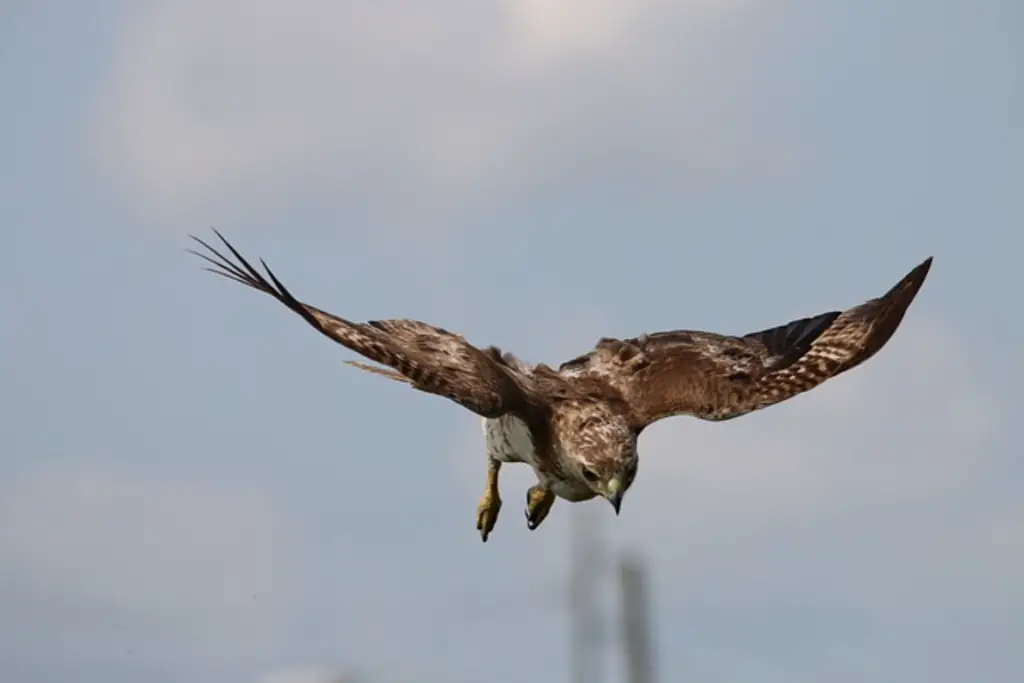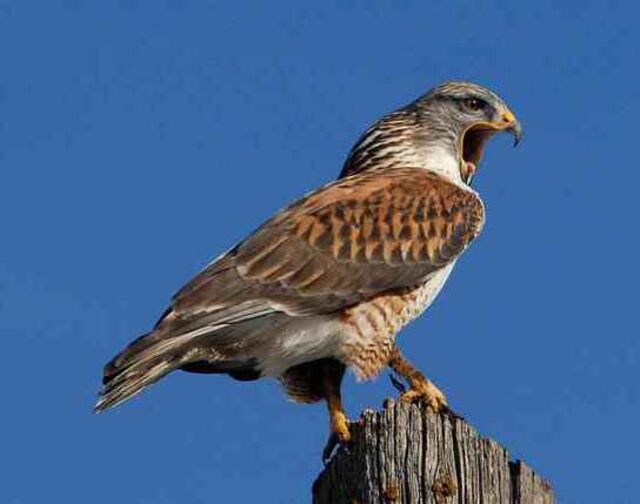Do you ever wonder what hawks eat? Are they strictly carnivorous or are hawks herbivores, and do they have a taste for plant material?
Hawks are fascinating birds of prey that have captured the imagination of people for centuries. Their sleek bodies, sharp talons, and powerful beaks make them formidable hunters. But are they also herbivores?
In this article, we will explore the diet of hawks and investigate whether they have been known to consume plant material.
As you read on, you will discover the carnivorous nature of hawks and the factors that influence their diet.
You will also learn about cases of herbivory in hawks and the nutritional value of plant material for these birds.
We will delve into the impacts of herbivory on hawks and their role in ecosystems.
By the end of this article, you will have a clearer understanding of whether hawks are herbivores or not. So, sit back, relax, and join us on this journey of discovery.
Table of Contents
- 1 Overview of the Diet of Hawks
- 2 The Carnivorous Nature of Hawks
- 3 Cases of Herbivory in Hawks
- 4 Factors Influencing Herbivory in Hawks
- 5 The Nutritional Value of Plant Material for Hawks
- 6 The Impacts of Herbivory on Hawks
- 7 The Role of Hawks in Ecosystems
- 8 Conclusion: Are Hawks Herbivores?
- 9 Frequently Asked Questions
- 9.1 What is the lifespan of a hawk?
- 9.2 How do hawks mate and reproduce?
- 9.3 What are the different species of hawks, and how do they differ in their diet and behavior?
- 9.4 What are the main predators of hawks, and how do they defend themselves?
- 9.5 How do environmental factors, such as climate change and habitat loss, affect hawk populations?
- 10 Overall Conclusion
- 11 Author
Overview of the Diet of Hawks
Exploring the eating habits of hawks reveals a diverse and fascinating range of prey. While hawks are traditionally thought of as carnivorous predators, there is evidence to suggest that some species have evolved towards a more plant-based diet.
This can be seen in their consumption of fruits, nuts, and seeds, which provide essential nutrients for their survival.
The evolution towards herbivory in hawks may be due to a variety of factors, including changes in their environment and the availability of prey.
However, it’s important to note that the majority of hawks are still primarily carnivorous, hunting small mammals, birds, and reptiles.
Understanding the complexities of hawk diets can shed light on the intricate balance of ecosystems and the interdependence of all living beings.
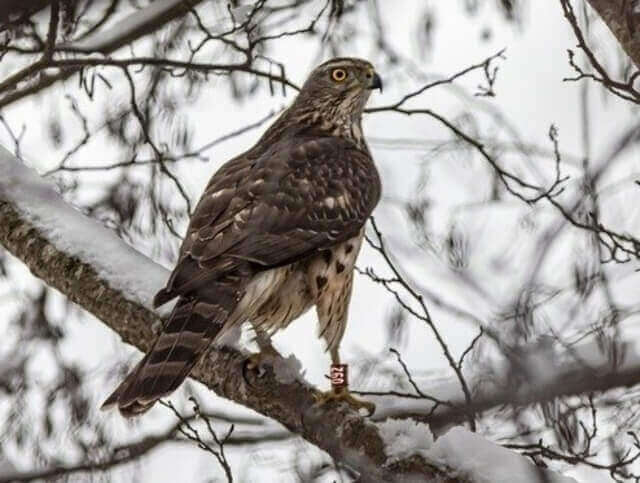
The Carnivorous Nature of Hawks
The diet of hawks consists mainly of small mammals, birds, and reptiles, making them formidable predators in the animal kingdom.
Did you know that some species of hawks have been known to consume up to 10% of their body weight in a single meal?
Hawks are known for their hunting techniques, which include soaring high in the sky, scanning the ground for prey, and swooping down at incredible speeds to catch their target.
Compared to other carnivorous birds, hawks are known for their agility and precision in hunting.
However, despite their reputation as carnivores, there have been cases of herbivory in hawks where they have been observed consuming fruits, seeds, and other plant materials.
This suggests that even the most ferocious predators can have a varied diet.
Cases of Herbivory in Hawks
You might be surprised to learn that even the most fearsome hunters have been known to munch on plants, with some species of these birds showing a taste for fruits, seeds, and other vegetation.
Plant consumption in hawks may seem unusual, but it is an adaptation to a plant-based diet driven by the availability of prey and environmental factors.
Some hawks, such as the Red-tailed Hawk and the Northern Goshawk, have been observed eating berries, while others, like the Harris’s Hawk, consume cacti fruits.
Additionally, some species of hawks have been known to eat grains and seeds, such as the Eurasian Sparrowhawk and the Cooper’s Hawk.
The reasons behind herbivory in hawks are still being studied, but it’s believed that it may be related to the scarcity of prey or the need to supplement their diet with nutrients not found in meat.
Whatever the reason, it’s clear that hawks are adaptable and resourceful creatures.
As we explore factors influencing herbivory in hawks, we’ll gain a deeper understanding of the complexities of these fascinating birds.
Factors Influencing Herbivory in Hawks
Get ready to discover what influences hawks to incorporate plant-based foods into their diet! Factors affecting plant consumption in hawks include availability, seasonality, and nutritional requirements.
During times of food scarcity, hawks may turn to plant material as a source of sustenance.
Additionally, some hawks have adaptations for herbivory, such as elongated intestines that allow for better digestion of plant material.
However, despite these adaptations, hawks are primarily carnivorous and require a diet rich in animal protein to maintain their health.
Understanding the factors that influence herbivory in hawks can provide insight into their behavior and ecology. With this in mind, let’s explore the nutritional value of plant material for hawks.
The Nutritional Value of Plant Material for Hawks
As you dive into the nutritional value of plant material, you’ll discover an unexpected world of sustenance for these feathered hunters, full of vitamins and minerals that can keep them soaring high.
Hawks have a unique digestive system that allows them to extract nutrients from plant material, thanks to their gut microbiome and physiological adaptations in plant digestion.
Their sharp beaks and powerful talons may be the tools of their trade, but their digestive system is just as important for their survival.
Some of the plant materials that hawks have been known to consume include berries, seeds, and even leaves.
These plant materials can provide important nutrients such as carbohydrates, fiber, and antioxidants.
While hawks are primarily carnivores, their ability to consume and digest plant material provides them with a diverse range of nutrients that can help them thrive in their environment.
The role of gut microbiome and physiological adaptations in plant digestion in hawks is truly remarkable. As you move on to the next section, you’ll explore the impacts of herbivory on hawks.
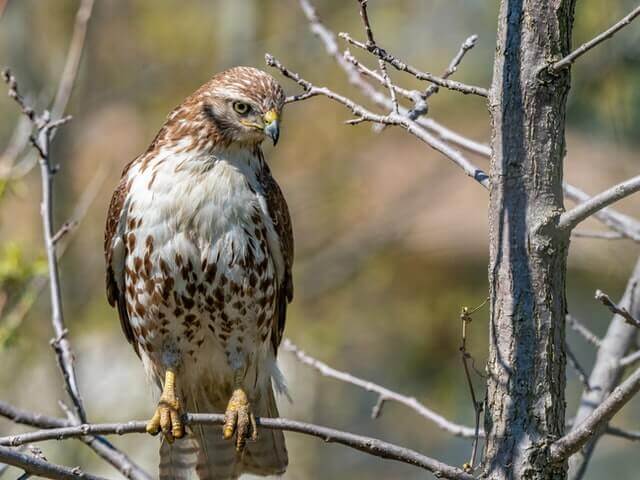
The Impacts of Herbivory on Hawks
Discover how plant consumption affects the diet and survival of these fierce predators in the wild.
Although hawks are primarily carnivorous, a few species have been known to consume plant material, such as berries and fruits, as a supplementary food source.
However, the ecological implications of herbivory on hawks are still unclear.
Some studies suggest that consuming plants may provide additional nutrients and vitamins that are not found in meat, while others argue that it may have negative impacts on their digestive system.
Hawks have also developed behavioral adaptations, such as scavenging and hunting for insects, to supplement their diet.
These adaptations allow them to survive in diverse environments and during times of food scarcity.
Understanding the impacts of plant consumption on hawks is important for conservation efforts and maintaining the delicate balance of ecosystems.
As we explore the role of hawks in ecosystems, it becomes clear that they play a crucial role in controlling populations of smaller animals and maintaining the health of their habitats.
The Role of Hawks in Ecosystems
You’ll be surprised to learn that these fierce predators play a crucial role in controlling populations of smaller animals and maintaining the health of their habitats.
Some species of hawks consume up to 500 rodents per year. As apex predators, they are at the top of the food chain, and their hunting skills are unparalleled.
Hawks also have unique nesting habits. Some species build their nests in trees, while others prefer cliffs or even the ground.
Despite their reputation as predators, hawks are not immune to environmental threats, including habitat loss and pollution.
As we delve into whether hawks are herbivores, it’s important to remember the vital role they play in our ecosystems.
Conclusion: Are Hawks Herbivores?
So, what’s the verdict on what these fierce predators eat? Let’s find out.
Hawks are not herbivores; they’re carnivores that feed on small mammals, birds, and reptiles.
Their digestive systems are designed to process high-protein diets, and they have keen eyesight and sharp talons to catch their prey.
However, there are potential benefits of herbivory for hawks. Some species of hawks have been known to supplement their diets with fruits and grains during times of food scarcity.
This adaptation allows them to survive in harsh environments where prey is scarce.
While hawks are not herbivores, their ability to adapt their diets to survive in different environments is a testament to their resilience and ingenuity.
As you explore the world around you, remember that freedom and adaptability are key to survival, just like the hawks.
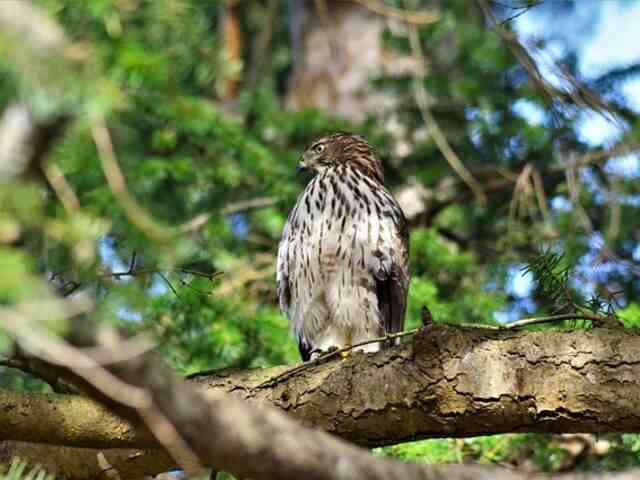
Frequently Asked Questions
What is the lifespan of a hawk?
Hawks are magnificent creatures that thrive in various habitats, from forests to desolate landscapes. Their average lifespan varies depending on their species and living conditions, but the majority live for about 10-20 years in the wild.
Some hawks in captivity can even live up to 30 years. These birds of prey are known for their sharp talons and keen eyesight, making them highly skilled hunters.
They are free-spirited creatures that embody the essence of freedom, soaring through the skies with grace and power.
Despite their predatory nature, hawks are essential to maintaining a healthy ecosystem.
They play a crucial role in keeping the population of smaller animals in check, helping to maintain balance in their respective habitats.
How do hawks mate and reproduce?
When it comes to hawk courtship rituals, these birds of prey engage in elaborate displays to show off their strength and agility to potential mates.
The male will perform acrobatic flights, dive-bombing and soaring high in the sky, while the female watches from below.
Once a mate is chosen, the pair will bond for life and build a nest together. The female will lay one to four eggs, which both parents take turns incubating for about a month.
Once the chicks hatch, they are fed a diet of small mammals and birds by both parents until they are ready to leave the nest and fend for themselves.
Hawks have developed unique egg incubation techniques and courtship rituals that ensure successful reproduction, making them a fascinating species to observe in the wild.
What are the different species of hawks, and how do they differ in their diet and behavior?
As a lover of freedom, you may be fascinated by the diverse species of hawks and their hunting behavior.
There are over 250 species of hawks found worldwide, with each having its unique characteristics and behavior.
For instance, the Red-tailed hawk is known for its broad wings and a long tail, while the Cooper’s hawk has a slender build and short wings.
These differences in physical structure and hunting behavior allow them to prey on different types of prey, such as small mammals, birds, snakes, and insects.
The Harris’s hawk, for example, is known for their cooperative hunting behavior, where they work together to capture prey.
Overall, the diverse species of hawks display fascinating hunting behavior that showcases their unique adaptations to their environment.
What are the main predators of hawks, and how do they defend themselves?
If you’re interested in learning about hawk defense mechanisms and hunting tactics, there are a few things you should know.
First of all, hawks are incredibly skilled hunters and can use a variety of tactics to catch their prey, including soaring high above their target and diving down to catch it in their talons.
However, hawks are also vulnerable to natural threats, such as habitat loss and predation by larger animals.
To defend themselves, hawks have developed a number of defense mechanisms, including sharp talons and beaks, powerful wings, and the ability to blend in with their surroundings.
Overall, hawks are fascinating creatures that have adapted to survive in a variety of environments, and their hunting tactics and defense mechanisms are a testament to their incredible resilience and adaptability.
How do environmental factors, such as climate change and habitat loss, affect hawk populations?
As you may have heard, climate change and habitat destruction have been having a major impact on hawk populations.
The consequences of these factors have been devastating, as these majestic birds struggle to adapt to rapid environmental changes.
Climate change has led to altered migration patterns, as well as a decline in prey populations, which are crucial to the survival of hawks.
Habitat destruction has also had a significant impact, as hawks are losing their natural nesting sites and hunting grounds.
Despite their incredible adaptability, hawks are struggling to keep up with these changes, and it’s up to us to take action to protect these magnificent creatures and their habitats.
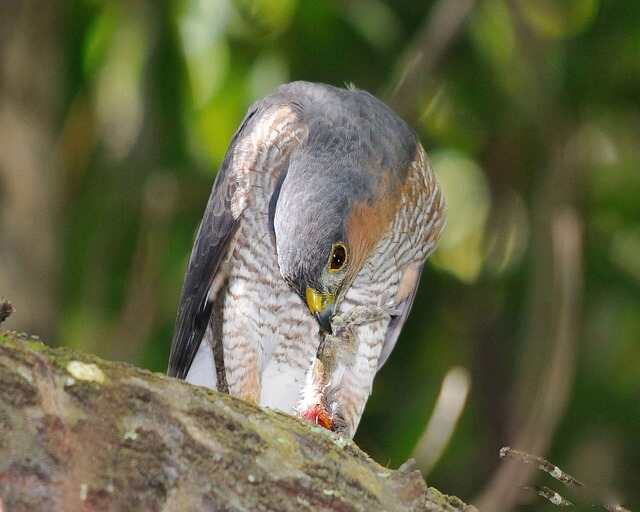
Overall Conclusion
So, are hawks herbivores? After delving into the research, it’s clear that hawks are primarily carnivorous and rely heavily on a diet of small animals such as rodents, birds, and reptiles.
However, there have been rare cases of hawks consuming plant material, indicating that herbivory is a possibility for these birds of prey.
One anticipated objection to the idea of hawks being herbivores might be that the nutritional value of plant material isn’t sufficient for these birds to survive.
While it’s true that plant material may not provide all the necessary nutrients for hawks, studies have shown that certain plant species can be an important source of vitamins and minerals for these birds.
Additionally, in times of food scarcity, hawks have been observed consuming vegetation as a means of survival.
Overall, while hawks are not typically considered herbivores, the possibility of herbivory can’t be completely ruled out.
It’s important to continue studying the diet and behavior of these fascinating birds in order to better understand their role in ecosystems and the impact of their diet on their health and survival.

